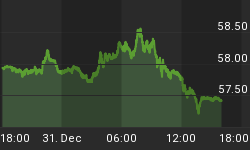"Where breadth goes, the market usually follows," goes an old market saying. Breadth indicators are useful tools to assess the inner workings of the market's rallies or corrections, and are used to identify strength or weakness behind market moves, i.e. to assess how the bulls and the bears are exerting themselves.
First, a quick review of the stock market scoreboard. The MSCI World Index and the MSCI Emerging Markets Index have declined by 4,8% and 6,7% respectively since the highs of January 11. Following its sharpest three-day decline since March last week, the S&P 500 Index is down by 4.7% since the peak of January 19, the Dow Jones Industrial Index 4.9%, the Nasdaq Composite Index 4.7% and the Russell 2000 Index 4.8%. After yesterday's bounce from short-term oversold levels, US stock market futures and foreign bourses are heading down again.
The major moving-average levels for the benchmark US indices, the BRIC countries and South Africa (where I am based in Cape Town when not travelling) are given in the table below. With the exception of the Russell 2000 Index and the Russian Trading System Index, the indices in the table are all trading below their 50-day moving averages. The S&P 500 Index is threatening to break below its December low of 1,092 and also to breach an upward sloping trend line that extends from the August lows. A decline below these support levels could signal a deeper pullback.
Although at this juncture all the indices are still trading above the key 200-day moving averages - an indicator of the primary trend - one should keep a close eye on these important levels. (The Shanghai Composite is a mere 64 points away from its 200 DMA as I am writing this post.)

Back to market internals: The number of NYSE stocks trading above their respective 50-day moving averages has declined to 49.7% from 86.2% at the beginning of January (see top chart below). In order to be bullish about the secondary or intermediate trend, one would expect the majority of stocks to trade above the 50-day line. Based on this indicator, and also the 50-day moving average of the S&P 500 Index itself, the intermediate trend may be in the process of turning down, but a few days are needed to confirm the breaks.
For a primary uptrend to be in place, the bulk of the index constituents also need to trade above their 200-day averages. The number at the moment is 82.5% - somewhat down from its early January high of 88.7%, but nevertheless still firmly in bullish territory (see bottom chart below).

Source: StockCharts.com

Source: StockCharts.com
Also focusing on the short-term technical picture of the S&P 500 Index, Adam Hewison (INO.com) provides a brief analysis advocating that one should be out of the market at the moment. Click here to access the presentation. (The analysis was done on Friday morning, but is still as relevant today as it was a few days ago.)

It goes without saying that the strong rally since March is bound to be followed by a correction at some stage. We are about to find out whether this is the moment. In the meantime, be cautious out there.
















